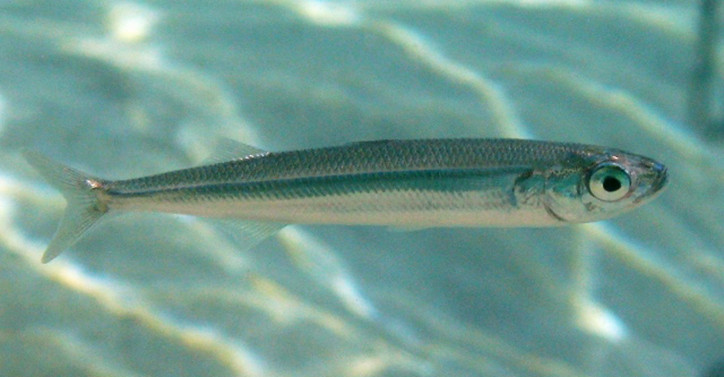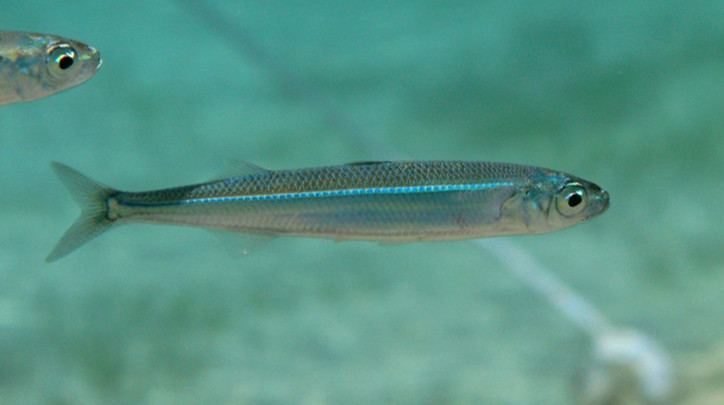Fish of the Atherina genus of the Atherininae subfamily of the Atherinidae (Old World silversides) family of the Atheriniformes (silversides) order of the Acanthopterygii superorder.

(Mediterranean sand smelt. Photo by © Roberto Pillon. colapisci.it)
Mediterranean sand smelt (Atherina hepsetus) was first described in 1758 by the Swedish naturalist Carl Linnaeus (1707-1778).
The maximum recorded length is 20 cm; specimens up to 15 cm long are more common. It is a coastal sea schooling fish. Sometimes, it enters the bays, lagoons and parts of the rivers close to the mouth. It feeds on pelagic crustaceans and bottom crustaceans.

(Mediterranean sand smelt. Photo by © Roberto Pillon. fishbase.org)
It is a permanent inhabitant of the Adriatic Sea.
Names of Mediterranean sand smelt (Atherina hepsetus) in other languages are as follows:
Aterina (Albanian), Srebarka (Bulgarian), Koornaarvis (Dutch), Αθερίνα (Atherina), Σουβλίτης (Suvlitis) (Greek), Atherina (Hebrew), Chucleto (Spanish), Latterino sardaro (Italian), Großer Ährenfisch (German), Ateryna atlantycka (Polish), Peixe-rei-do-alto (Portuguese), Aterina mare (Romanian), Короткорылая атерина (Korotkorylaja aterina) (Russian), Gavun (Serbian, Croatian), Veliki gavun (Slovenian), Çamuka balığı (Turkish), Sauclet (French).